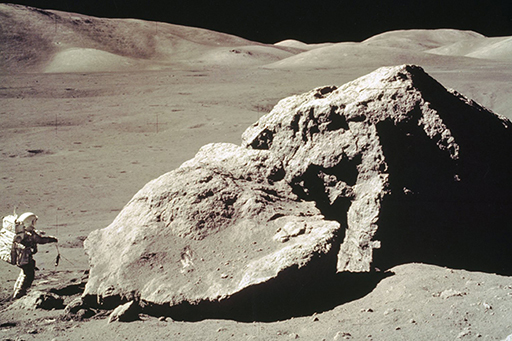2 Why study Moon rocks?
The Moon rocks are stored at NASA, apart from fragments loaned to scientists for study. However the virtual microscope makes it possible to study Moon rocks up close and discover for yourself what they can teach us about the Moon.

Studying rocks can tell us a great deal about the conditions under which they formed. Scientists can determine whether Moon rocks formed in a volcano, during a meteorite impact or are an accumulation of billions of years of dust falling onto the Moon’s surface.
To understand how Moon rocks are formed, scientists sometimes have to look at features on a very small scale. The smallest features of Moon rocks, the minerals and glass fragments, contain information that isn’t preserved on Earth – information about the early history of our Moon, the Earth and the Solar System.
The first clue for a geologist is the form the rock takes – in other words, is it crystalline or is it glass? Materials that form the surface of the Moon occur in two states: crystalline and amorphous. In crystalline solids, the atoms are located in regular repeating structures, although occasional imperfections may occur. Amorphous solids have no well-defined structure at the atomic level. The crystalline state is represented by minerals crystallised from lavas at the surface and by those that are re-crystallised as they are heated or buried. In glass, which can have a variety of chemical compositions, the amorphous state can be preserved when magma erupts as lava and doesn’t completely crystallise, or when a meteorite impact causes sudden melting of the surface rocks.
The majority of minerals in Moon rocks are also found on Earth and can be recognised under the microscope. The most common mineral varieties include olivine, pyroxene, plagioclase feldspars and metal oxides such as ilmenite. Glass is also a common component of Moon rocks returned by the Apollo astronauts. As you look at Moon rocks, remember that although the processes you’re observing may have happened billions of years ago, they occurred then just as they do today: an erupting volcano may last for days or weeks, while a meteorite impact happens in an instant.
